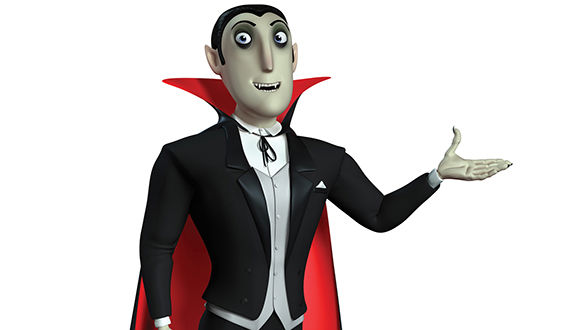As a great radio comedian of a bygone era once quipped, “Imitation is the sincerest form of television.” Meaning, if you saw it in a movie theater in the summer and it was a blockbuster, odds are you are going to see a facsimile of it on your television come the following fall or spring. It’s the nature of the beast.
And speaking of beasts, television’s fax machine has been in overdrive lately when it comes to filling up the airways with all manner of beasts vampires, werewolves, demons, demon hunters and every replicating form of horror/gothic/fantasy television writers can steal. I can say that as a recovering television writer because I used to “steal” from the best.
But these are not your father’s monsters. Today, thanks to Anne Rice, one of the first to turn a dark genre on its head by making a vampire a sympathetic romantic character, narrative devices that used to draw us into battles of good vs. evil have been transformed.
Now the protagonists in stories are the monsters and the real villains are the non-monster types. The overriding theme in just about every (and there are more than a dozen) television shows that feature supernatural creatures is that the dark side isn’t all that dark after all.
Despite some rare levels of angst and even rarer levels of unrequited love, the supernatural alternative lifestyles are not only portrayed as appealing, but in most cases, preferable to the drab, closed-minded existences of the mere mortals with whom they coexist during the hour-long format on a weekly basis.
Anne Rice turned vampires and werewolves into the fodder of teen romance. Take the “Twilight” series…please. The blockbuster nature of those books and ensuing movies has been responsible for any number of television homages (that’s what television writers call borrowing heavily from an original source).
But is this really what this genre is supposed to be about? For our times, I guess the answer is yes. The lines of good and evil have been growing increasingly fuzzy in all manner of popular culture so why should vampires, werewolves and demons be immune to the same cultural pressure points?
If we go back to the ultimate vampire tale, Bram Stoker’s “Dracula,” we read a tale of a full throated (sorry, I couldn’t help myself), hold on to your seat horror story. There were good guys who were good and there was a very very bad guy.
Interesting, unique and fascinating to be sure, but there is never a doubt that the title character of this book was someone to fear. Even the anti-vampire tools of the trade in the book, published at the end of the 19th Century, were “softened” by the early 20th Century film versions. In the book, the vampire hunter weapons of choice were holy water, rosary beads, crucifixes (not crosses) and sanctified hosts.
Universal pictures jettisoned most of this when it really blew the lid off the Vampire genre by translating Stoker’s novel to film with Bela Lugosi, where the overtly Catholic imagery was replaced with more generic crosses and the use of daylight.
But in both original novel and most of the earliest renditions of the story on film, Dracula was the bad guy. Intriguing yes; fascinating, of course. How else to explain the centuries of thrall this idea has commanded over many different cultures?
It doesn’t help the side of goodness and light that the original hero in the novel is a glorified version of a Century 21 real estate agent. But as mundane as Jonathan Harker may be, he and the much more interesting vampire hunter extraordinaire Van Helsing both see Dracula for what he is: A being that despite his sophistication and even alluring nature harbors malevolent intent and embodies damnation.
In short, vampires are evil. They are the mirror-image of the salvation story, beings who have everything they need materially like a body that will never die in exchange for the ultimate price, their souls. The vampire in the classical sense flies in the face of God’s divine plan. He has given himself over to the dark side’s empty promise and, like Lucifer himself, is most content when he can “share” his damnation with others.
Not so the spate of monster shows on television today. Instead of being cautionary tales of human hubris and flirtations with evil, we get a never ending stream of vampires, werewolves and demons who seem to possess neo-gnostic secret knowledge about the answer to life’s riddles that cut like a scythe through the ever corruptible pretense of organized religion.
“Freed” from the bounds of the religiously inspired strictures on all manner of appetites, vampires and other forms of literary monstrosity now pay little price for their chosen “lifestyles.” I know I’m in the minority here. The “Twilight” books and their movie progeny have countless millions of fans and the ensuing television monster-scape exists explicitly from the ratings it collects like so many lost souls.
I know not what course other consumers of horror fiction may take, but as for me, give me vampire stories where the good guys really are the good guys and the bad guys wear capes and speak in cool Romanian accent. Now that’s a genre I can really sink my teeth into.

